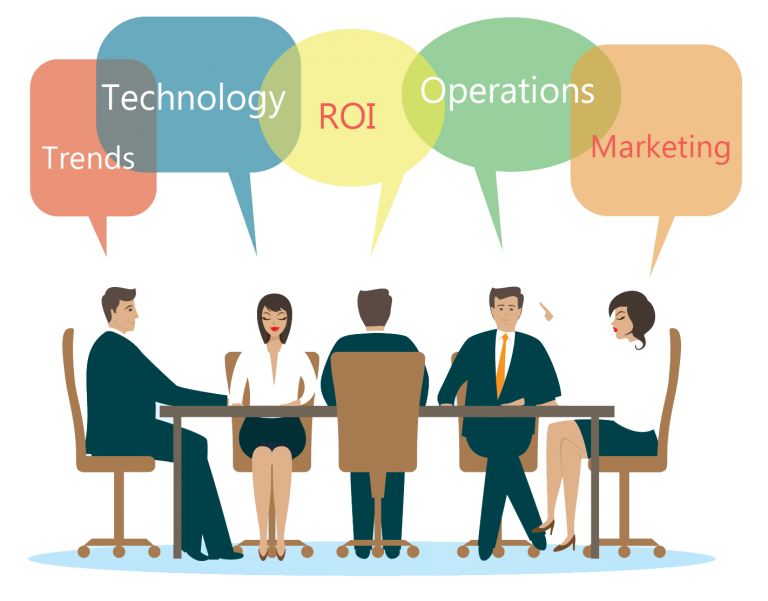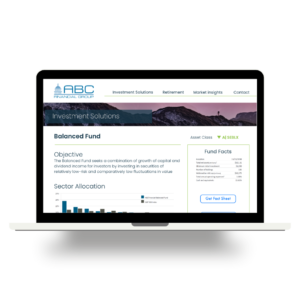Key Findings from our Second-Annual Investment Marketing Roundtable

In May 2017, we hosted a private roundtable, moderated by Candyce Edelen of PropelGrowth. At the table were 15 senior marketers from various investment management firms. This was our second annual event, with about half of the participants returning from last year. The participant firms included boutique asset managers, medium-sized regional and global investment firms, and 3 of the top 20 global asset managers. AUM for the firms represented ranges from $20 Billion to more than $2 Trillion. All of the participants serve multiple channels including institutional (trusts, foundations, pensions, corporations, etc.), intermediary and direct retail advisor channels.Read More
Why Outsourcing your FactSheets to a Service Bureau is Risky
 Every investment marketer would love to get tedious tasks, like updating factsheets, off of their plate. Automation is a great way to accomplish this. When you’re considering how to automate your factsheets or other investment marketing collateral, there are essentially four different approaches you can consider.
Every investment marketer would love to get tedious tasks, like updating factsheets, off of their plate. Automation is a great way to accomplish this. When you’re considering how to automate your factsheets or other investment marketing collateral, there are essentially four different approaches you can consider.
Your options are:
- Outsource to a service bureau,
- Implement a “DIY” solution in-house,
- Buy a technology-enabled service (a hybrid of #1 and #2), or
- Build a custom solution in-house (Read our Build vs. Buy guide).
There are pros and cons with each of these options and, depending on your firm’s situation and goals, one of these options will be the best fit. Firms operating under tight budgets and resources will often gravitate toward the first option on this list — outsourcing factsheets to a service bureau. The manual production of marketing collateral like factsheets, commentaries, and client reports is labor-intensive and laden with risk. Not to mention, it’s often the least gratifying work that the marketing team does. “Kicking it over the fence” to a fully outsourced service provider often seems like the most attractive option. Read More
[Podcast] Asset Management Marketing Trends with Andrew Corn

Listen to our guest, Andrew Corn, discuss the top trends in asset management marketing
Andrew Corn, CEO of E5A Integrated Marketing, sat down with myself and Synthesis CEO, John Toepfer, to discuss emerging marketing trends in 2017. The discussion revolves around how automation continues to play an important role, making it easier for marketers and salespeople to be customer-centric in their approach. In this episode, we discuss data analysis as a differentiator, the role of ETFs in the retail and institutional space, the challenges with using Microsoft-based products like Excel and PowerPoint for automating content, and the adoption of content usage analytics. This episode brings important insights to investment marketers, salespeople, and executive management.
Andrew Corn is CEO of E5A Integrated Marketing in New York. Before starting E5A, Andrew was the CIO of Beacon Trust and Clear Asset Management. He has led the development of a multi-factor model to manage long only equities, designed ETFs, and managed two hedge funds. At E5A he helps companies leverage digital media and technology to grow revenue through systematic and programmatic marketing, and advertising, of course while adhering to industry regulations.
The Problem with PowerPoint and InDesign-based Content Automation (The “Save As” Phenomenon)

Recently, I wrote an article about why automating within desktop publishing environments can be a bad idea. When I talk about desktop publishing environments, I’m referring to programs like InDesign, PowerPoint, or Quark for content automation. If you’re looking for a way to effectively scale your literature production, you simply must say goodbye to your desktop defaults. And, I’ll tell you why.
This topic is front-of-mind for me today, following a meeting with a prospective client last week. This client described their frustration with their current automation solution. They told me a story about how their automation provider is currently supporting their suite of about 50 documents using about 50 InDesign templates. Even the client recognizes that this is a problem and knows that if the templates were being shared properly as shared entities then there should be, at most, eight of them for this catalog of documents. Fewer templates allow changes to be made centrally, without needing to apply a change 50 different times.
I smiled in sympathy as they told me about this problem. This is precisely the issue with automation solutions that are based on desktop publishing applications. This client articulated the issue even more simply and perfectly than I have in my past musings on the topic.
If a Microsoft or Adobe desktop publishing application is being used as the foundation of the automation solution, that system is then dependent on that desktop publishing tool, as well as the people who use the tool. It’s easy to overlook or dismiss this reality. People really love these programs, and understandably so. They are familiar, intuitive and your collateral is probably already designed in one of these formats. But, the hard truth is that almost always leads to bad long-term results in a commercial document production environment. This is due to what we call the “Save As Phenomenon”.Read More




 Compare the Top 3 Finserv Content Automation Vendors [White paper]
Compare the Top 3 Finserv Content Automation Vendors [White paper] Create Pitchbooks the Drive Sales [White paper]
Create Pitchbooks the Drive Sales [White paper] Build vs. Buy: Should Your Financial Services Firm Outsource or Insource Marketing Technology? [White paper]
Build vs. Buy: Should Your Financial Services Firm Outsource or Insource Marketing Technology? [White paper]  10 Tips for Rebranding your Fund Marketing Documents [White paper]
10 Tips for Rebranding your Fund Marketing Documents [White paper]




